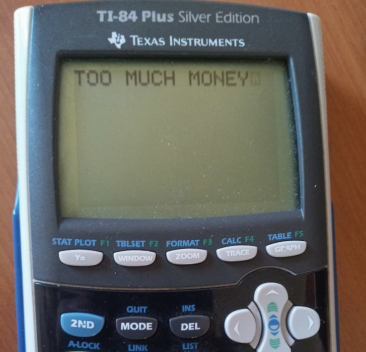Despite arriving on the market nearly 20 years ago, Texas Instruments’ TI-84 Plus is still the standard calculator for mathematics courses across the country. Boasting specs that make your grandpa’s computer look like a feat of quantum engineering, the TI-84 Plus continues to be marketed at a list price of $150 as of 2022, even though it started at $120 in 2004. In an age where laptops and smart devices are the norm, how is this outdated piece of technology still managing to keep pace?
The secret ingredient to the TI-84 Plus’ relevancy, and Texas Instruments’ relevancy in general, is lobbying. According to OpenSecrets, an organization dedicated to tracking lobbying data, Texas Instruments began lobbying several federal departments, including the Department of Education and the Office of Science and Technology Policy, as early as 2005. Its lobbying expenditures have remained consistent over the decades, ranging between $1 and $2 million, at $1.25 million in 2021.
“It was required by my high school in Charlotte,” said Mario Delgado, a computer science major. “I use a TI-Nspire, which cost around $200 when I got it. But I wasn’t even allowed to use it on most tests.”
In 2013, Texas Instruments lobbied the Texas state legislature for a bill that would mandate that all high school students take Algebra 2, a class that requires the usage of graphing technology.
“You basically had to have one in high school, even though it wasn’t required for me,” said Alli Brophy, a computer science and mathematics major. “The school-provided ones weren’t great. I got my current TI-84 for around $100 in 2021. It took a little bit of price-hunting.”
All of this lobbying has allowed Texas Instruments to become the dominant force in the calculator market, occupying nearly 71.39% of the market as of 2019. The TI-84 Plus is assumed to be the default calculator used by students, professors, textbooks, and even testing administration companies, such as College Board. But is this technology even necessary?
“I mainly use my phone for everyday math,” said Nick Casale, a computer science major. “What’s the point in buying a new calculator when it’s so expensive?”
“I have not required students to have a calculator in my classes for nearly four years now,” said Kristen Abernathy, associate professor of mathematics at Winthrop. “Most of my classes only need basic phone functionality, and usually, anything more complicated can be done in an app on one’s computer. I lean towards open-source software. I don’t see the need for students to pay for calculators.”
As it stands now, students and professors are starting to move away from what was once standard technology to open-source alternatives. This shift at Winthrop may be indicative of a more general trend, in higher education at least, of bucking the hold that Texas Instruments has on academic resources and on the education industry overall.




